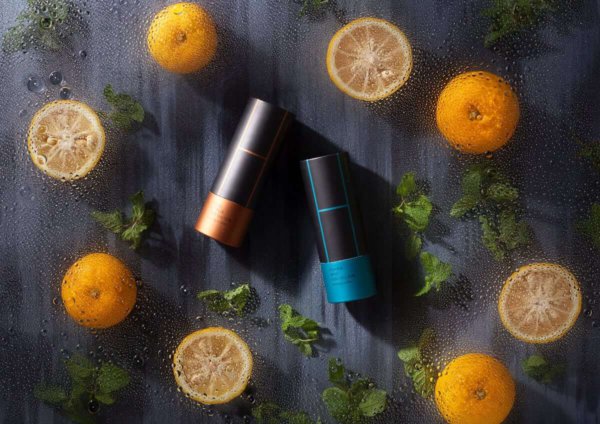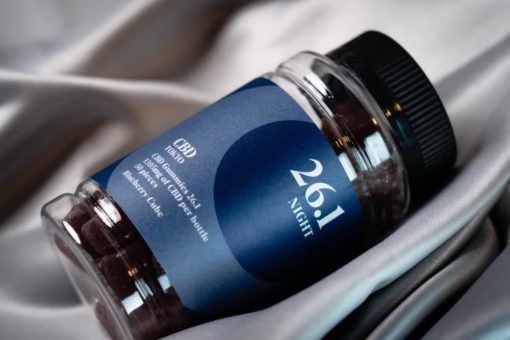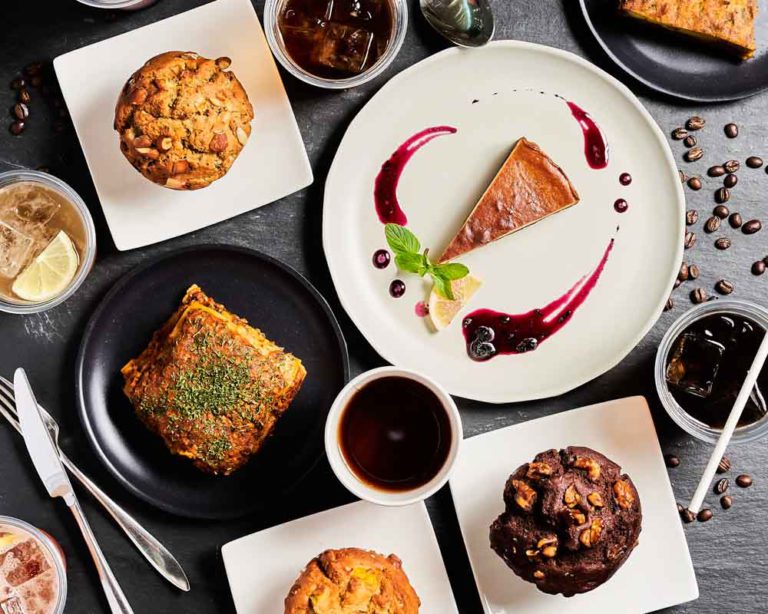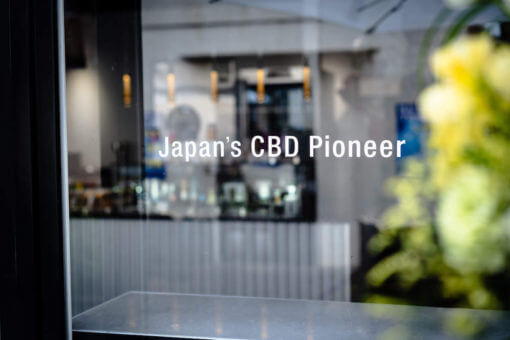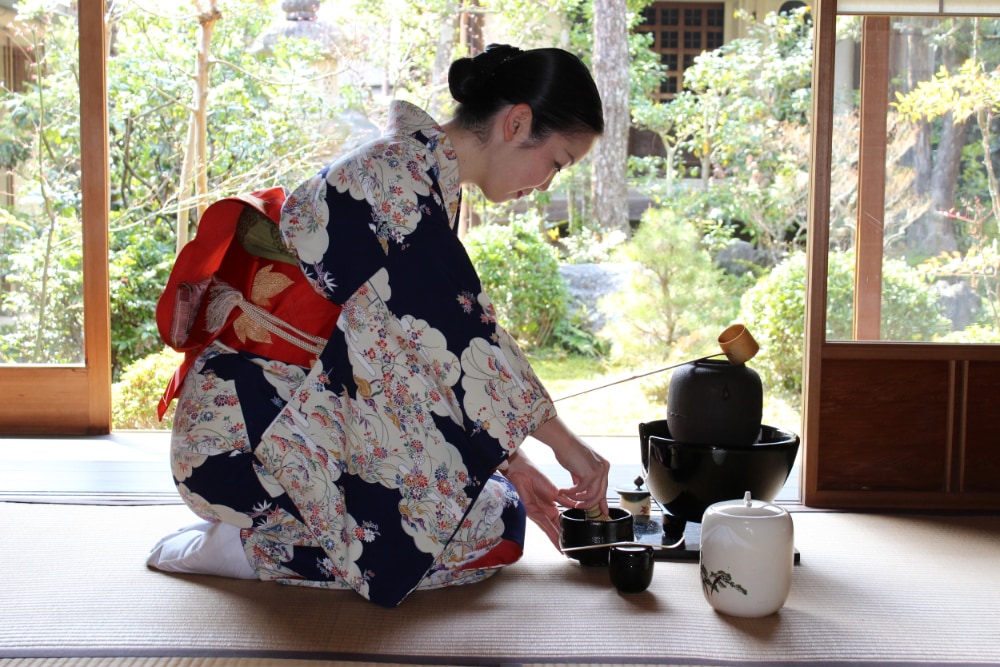Matcha
Cultural significance of the matcha tea ceremony
“Sado”, “Chanoyu”, or simply “Ocha”, are all names for the highly choreographed and ritualized Japanese matcha tea ceremony. The ceremony itself focuses on the preparation and serving of tea made from pure powdered green tea leaves called “matcha”, but there is much more to the ceremony than just drinking this antioxidant rich elixir. Tradition, aesthetics, and what may the ultimate form of hospitality blend into a tea drinking experience like nothing else.
What is the matcha tea ceremony?
One can learn and practice the art of the tea ceremony for years, but truly understanding the esoteric nature of the tea ceremony comes only through devotion, just like any other art form. Simply put, one could say that the aim of the Japanese’s tea ceremony it to create a bond between the host and guest over the simple act of drinking a cup of tea. All aspects of the Japanese tea ceremony take the guest into consideration, from the placement of the instruments to the décor, each item is selected and exhibited with mindfulness.
Origin and history of the matcha tea ceremony
Although tea had long been a popular drink enjoyed by Japanese noblemen in the thirteenth century, it was during the Muromachi period (1336-1573) that the samurai class began to lay the groundwork for the aesthetics of the tea ceremony by carefully selecting the utensils used to prepare the tea and by paying close to the surrounding décor. However, the highly stylized tea ceremony of today owes it heritage in great part to two men, Murata Shuko, the founder of the Japanese tea ceremony, and the 16th century tea master Sen no Rikyu, who perfected the ceremony in terms of the style and high level of hospitality shown towards guests.
Form and etiquette in the tea ceremony have developed throughout the centuries and become an art form. Arguably the most important part of the tea ceremony is the spiritual aspect in which the host welcomes the guests, manifested in the elaborate preparations made even before the ceremony even begins, such as the layout the tearoom and presenting motifs of the current season.
Tools used during the matcha tea ceremony
The tools used during the tea ceremony, referred to as “dogu”, come in a wide variety, and many dogu are needed to perform even a basic ceremony. As the number of dogu are too many to list in their entirety, the following list will introduce only the most basic tools.
- Cha-ire (茶入): The tea caddy used to hold the green tea. Usually made out of ceramic.
- Chakin (茶巾): A white cloth used to wipe clean the tea bowl as it passed from guest to guest.
- Chasen and Chasen Yasume (茶筅/茶筅休め): A tea whisk carved from a single piece of bamboo, and a tea whisk stand used to preserve the shape of the whisk.
- Chashaku (茶杓): A tea scoop carved from bamboo or ivory
- Chawan (茶碗): The all important tea bowl. It comes in a Varity of styles to match the season.
- Chagama (茶釜): An iron pot or kettle used to heat up the water for tea making.
- Hishaku (柄杓): A long bamboo ladle used to transfer hot water from the chagama to the chawan.
Why was the matcha tea ceremony performed?
The Japanese matcha tea ceremony has ties to Zen Buddhism and was originally a kind of meditative act based on the principles of harmony, tranquility, and purity. It particularly emphasized the Japanese concept of “Wabi-sabi”, or the beauty of the intransience of life, a concept that persists in today’s ceremonies as well.
Although the tea ceremony used to be exclusively performed by men, nowadays it is open to everyone and has in fact become more popular among women. The modern tea ceremony is practiced and enjoyed by both Japanese and non-Japanese alike, with more of a focus on the art form.
When is a matcha tea ceremony performed?
A matcha tea ceremony can be performed during any season, and throughout the day. The time at which a tea ceremony is performed depends on the season, but is now also affected by modern living.
During the summer time it is not uncommon to hold a ceremony as early as 6am, in order to escape the heat of the day. Due to a modern lifestyle focused on business, evening tea ceremonies have become an accepted practice, as a wider range of people can attend after work as well.
Why use matcha? Instead of any old regular tea?
As mentioned above, the tea ceremony uses a powdered form of green tea known as matcha. Matcha is set apart from other kinds of green tea by the way in which it is prepared where the leaves are grown under special circumstances, dried, ground in to a rich powder. This matcha powder dissolves in the hot water with the help of the chasen whisk, and is then drunk in it’s entirety. Thus, without this powered form of green tea, the form of tea ceremony change entirely.
Additionally, matcha comes with a wide range of health benefits that greatly outweigh regular green tea, such as 10 times more antioxidants and a good amount of vitamin C.
Where to get ceremony grade matcha?
After reading about the tea ceremony and special nature of matcha, you may now be interested in trying matcha for yourself. Thankfully, ceremonial grade and other matcha are no harder to find than right here on HealthyTOKYO.
HealthyTOKYO takes pride in providing the best kind of ceremonial grade matcha, and with the gravity placed on always taking the guests’ needs into mind, it is a no brainer that selecting the best quality matcha for your tea ceremony is of paramount importance. HealthyTOKYO has you covered with its selection of matcha made in Japan and certified JAS organic.
For more information on the differences between cheap and expensive matcha, and what best suit your needs, please refer to the following HealthyTOKYO article.
Conclusion
With such a rich and detailed history, all the aspects of the Japanese tea ceremony are impossible to cover succinctly, but anyone interested in learning more can look forward to a lifetime of discovery.
If you have any questions about purchasing matcha on HealthyTOKYO, or anything else, please don’t hesitate use the site chat feature located on the bottom right of the webpage.
Before you go, just remember:
- The Japanese matcha tea ceremony is an intricate art form connecting host and guest.
- There are various kinds of matcha tea ceremonies that change depending on the season.
- The matcha tea used in a tea ceremony has great health benefits.
- You can buy your own high quality match for a tea ceremony from HealthyTOKYO.
References:
History of the Japanese Tea Ceremony
Japanese tea ceremony Utensils
Begin Japanology: Tea Ceremony
The Secret Meaning of Traditional Japanese Tea Ceremony
The Matcha Tea Infographic That Tells the Whole Story


